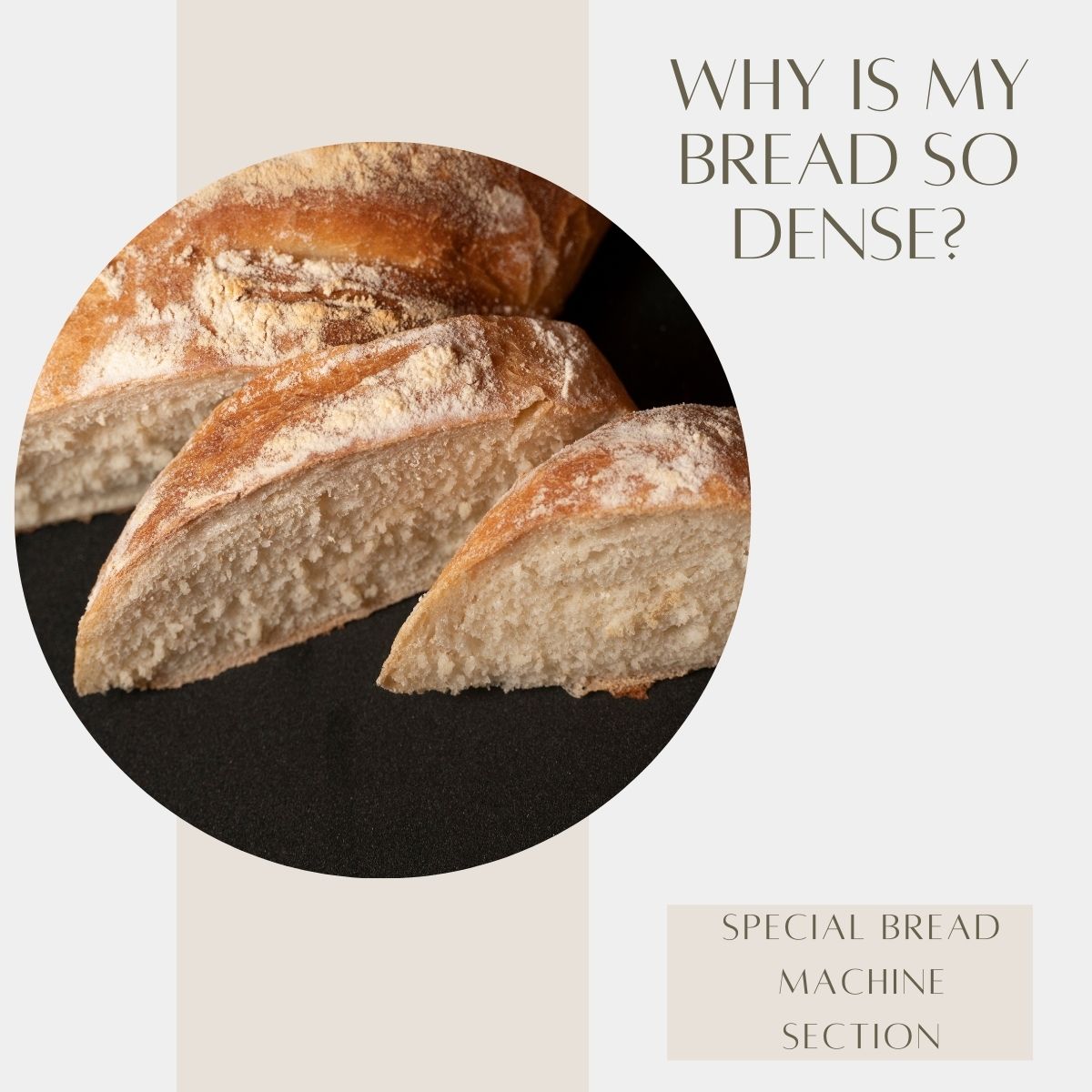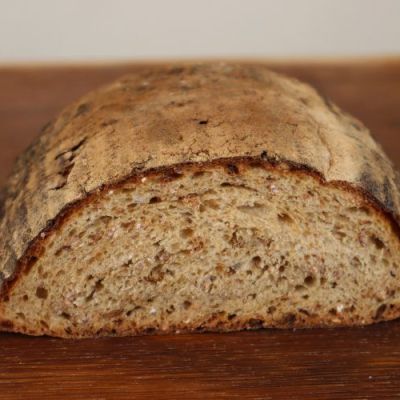To fix dense bread, increase kneading time and ensure proper yeast activation. Use fresh ingredients and allow sufficient proofing.
Dense bread can be disappointing, but it is often easy to remedy. Proper kneading helps develop gluten, giving bread its airy texture. Ensuring yeast is fresh and active is crucial for a good rise. Temperature and proofing time also play significant roles.
Warm environments help yeast work efficiently, while proper proofing gives dough time to expand. By paying attention to these factors, you can transform dense bread into a light, fluffy loaf. Adjusting your techniques and understanding the baking process can make all the difference. Happy baking!

Credit: www.busbysbakery.com
Common Causes Of Dense Bread
Baking bread at home can be a rewarding experience. But sometimes, your bread turns out dense and heavy. Understanding the common causes of dense bread can help you achieve that perfect loaf. Here are some key issues that could be affecting your bread.
Improper Kneading
One common cause of dense bread is improper kneading. Kneading dough helps develop gluten, which gives the bread its structure. If you don’t knead the dough enough, it won’t rise properly. The bread will be dense and heavy.
Make sure to knead the dough for the right amount of time. Most recipes suggest kneading for 10-15 minutes. You can test the dough by performing the “windowpane test.” Stretch a small piece of dough. If it forms a thin, transparent membrane without breaking, it’s ready.
Incorrect Ingredients
Another common cause of dense bread is using the incorrect ingredients. The type and quality of flour you use can affect the bread’s texture. For best results, use bread flour instead of all-purpose flour. Bread flour has a higher protein content, which helps form more gluten.
Also, check the freshness of your yeast. Old or inactive yeast won’t produce enough carbon dioxide to make the dough rise. Always use fresh yeast and store it in a cool, dry place.
Here’s a quick reference table for choosing the right ingredients:
| Ingredient | Recommended Type | Reason |
|---|---|---|
| Flour | Bread Flour | Higher protein content |
| Yeast | Active Dry Yeast | Ensures proper rise |
In summary, pay attention to kneading and ingredient quality to avoid dense bread. Happy baking!

Credit: saladinajar.com
Choosing The Right Flour
Choosing the right flour is crucial for baking light and airy bread. The type of flour you use affects the bread’s texture and taste. Different flours have varying properties. This section will help you understand the role of protein content and the differences between whole wheat and white flour.
Protein Content
Flour’s protein content directly impacts bread’s structure. Higher protein flours create stronger gluten networks. This helps bread rise and hold its shape.
| Flour Type | Protein Content |
|---|---|
| All-Purpose Flour | 10-12% |
| Bread Flour | 12-14% |
| Cake Flour | 7-9% |
For denser bread, use bread flour. Its higher protein content will help. If your bread is too dense, try mixing in some all-purpose flour.
Whole Wheat Vs. White
Whole wheat flour is made from the entire wheat kernel. It contains the bran, germ, and endosperm. This makes it more nutritious but can result in denser bread.
- Whole wheat flour absorbs more water.
- It creates a heavier dough.
- It can result in a denser loaf.
White flour is made from only the endosperm of the wheat kernel. It produces lighter, softer bread.
- It absorbs less water.
- It creates a lighter dough.
- It results in a fluffier loaf.
For lighter bread, consider using white flour. You can also mix whole wheat and white flour for balance.
Mastering The Kneading Process
Fixing dense bread often starts with mastering the kneading process. Kneading helps develop gluten, giving bread its structure and texture. Learning the right techniques can transform your homemade bread from dense to airy.
Hand Kneading Techniques
Hand kneading allows you to feel the dough and adjust as needed. Follow these steps for perfect dough:
- Flour your work surface lightly.
- Press the dough with the heel of your hand.
- Fold the dough in half towards you.
- Rotate the dough a quarter turn.
- Repeat pressing and folding for 10 minutes.
Ensure the dough is smooth and elastic. This signals that gluten has developed properly.
Using A Stand Mixer
A stand mixer can save time and effort. Use the dough hook attachment for best results:
- Attach the dough hook to your mixer.
- Place the ingredients in the mixing bowl.
- Start the mixer on low speed for 2 minutes.
- Increase to medium speed and knead for 5-7 minutes.
Check the dough’s consistency. It should be smooth and slightly sticky.
| Method | Benefits | Considerations |
|---|---|---|
| Hand Kneading | Allows full control over dough texture | Requires physical effort and time |
| Stand Mixer | Saves time and effort | Less tactile feedback on dough consistency |
By mastering these kneading techniques, you can ensure your bread turns out light and fluffy. Whether you choose hand kneading or a stand mixer, the key is to develop the gluten properly. Happy baking!
Ensuring Proper Fermentation
Fermentation is crucial in baking bread. It helps the dough rise and develop flavor. If your bread is dense, improper fermentation might be the cause. Let’s explore how to ensure proper fermentation.
Ideal Proofing Conditions
For proper fermentation, the dough needs the right conditions. The ideal temperature is between 75-85°F (24-29°C).
Humidity also plays a role. A humidity level around 60-80% is best. Use a damp cloth to cover the dough, keeping it moist.
Here is a table with ideal proofing conditions:
| Condition | Ideal Range |
|---|---|
| Temperature | 75-85°F (24-29°C) |
| Humidity | 60-80% |
Proper proofing ensures the dough rises well and develops a good texture.
Signs Of Overproofing
Overproofing can make bread dense. Look for these signs:
- The dough has doubled in size.
- It feels too soft and sticky.
- Air bubbles are too large.
If the dough shows these signs, it might be overproofed. Overproofed dough can collapse, making the bread dense.
To prevent overproofing, keep an eye on the dough. Check it regularly to ensure it doesn’t rise too much.
Baking Tips For A Better Crumb
Baking bread with a perfect crumb can be tricky. Dense bread happens due to various reasons. This guide offers baking tips for a better crumb.
Oven Temperature
The oven temperature is crucial for bread’s texture. Preheat your oven to the right temperature before baking. Use an oven thermometer for accuracy.
Here is a quick guide on oven temperatures:
| Bread Type | Temperature (°F) |
|---|---|
| White Bread | 375-425 |
| Whole Wheat Bread | 375-400 |
| Sourdough | 450-475 |
Bake at the recommended temperature. Too low and your bread may be dense. Too high and it may burn.
Steam For Crust
Adding steam during baking can create a better crust. Steam helps the dough expand and develop a crispy crust.
Here are a few ways to add steam:
- Place a pan of water in the oven.
- Mist the dough with water before baking.
- Use a steam oven if available.
Adding steam can make a huge difference. It can turn dense bread into a delightful loaf.

Credit: www.busbysbakery.com
Frequently Asked Questions
Why Is My Bread So Dense?
Dense bread often results from under-kneading or insufficient rising time. Check yeast activity and kneading technique.
How Can I Make My Bread Lighter?
Ensure proper kneading, adequate rising time, and use fresh yeast. Adding a bit more water can help too.
What Causes Dense Homemade Bread?
Common causes include under-kneading, incorrect flour type, or not enough rising time. Verify yeast freshness as well.
How To Avoid Dense Bread Texture?
Knead dough thoroughly, let it rise properly, and use the right flour type. Ensure yeast is active.
Can Over-kneading Cause Dense Bread?
Yes, over-kneading can lead to a tough, dense texture. Aim for a smooth, elastic dough.
Does Yeast Quality Affect Bread Density?
Absolutely, poor quality or expired yeast can result in dense bread. Always use fresh, active yeast.
Conclusion
Fixing dense bread can be simple with the right techniques. Adjusting your ingredients and kneading properly are key. Also, ensure your bread has enough time to rise. Experiment with these tips to achieve lighter, fluffier bread. Happy baking, and enjoy your perfect loaf!
